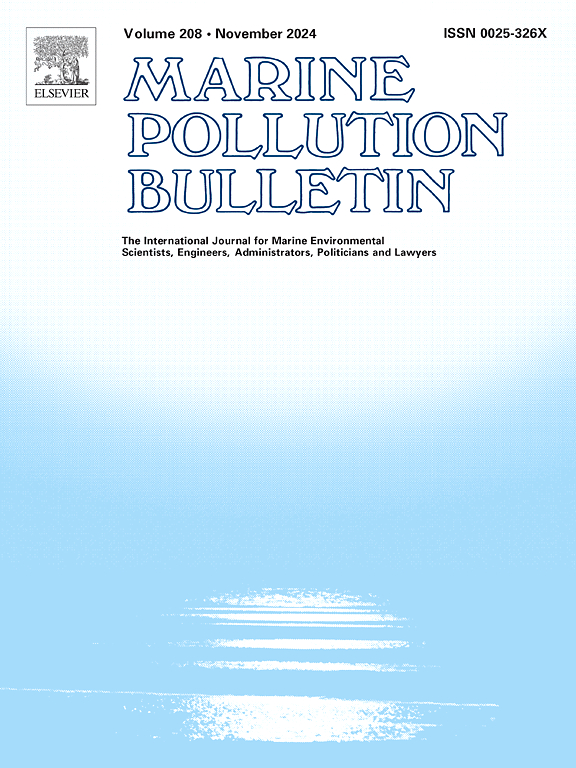悬浮颗粒物驱动的磺胺甲恶唑在水体中的吸附和迁移。
IF 4.9
3区 环境科学与生态学
Q1 ENVIRONMENTAL SCIENCES
引用次数: 0
摘要
抗生素的广泛使用导致水体抗生素污染严重,而悬浮颗粒物(SPM)是河流中抗生素的主要载体。通过间歇式吸附和环形水槽实验,研究了磺胺甲恶唑(SMX)在SPM上的吸附特性,并采用MIKE 21模型模拟SMX和SPM的迁移过程。结果表明,SMX在20 min内快速吸附,达到平衡吸附量的80%。通过Freundlich模型证实了SMX在SPM上的多层吸附,吸附过程是自发的、吸热的、无序的,SMX在SPM上的平衡吸附量随着盐度和有机质的增加而增加。SMX在SPM上的脱附发生在水动力状态的突然变化中,在30 min内接近SMX平衡吸附量的五分之一,并且SMX在SPM上的再吸附发生在水保持静止或再扰动时间延长的情况下。SMX的动态吸附过程与SPM的物理化学性质变化有关,主要受氢键、π-π相互作用和表面络合作用的影响,在大孔和中孔尺度上受孔隙填充的显著影响。MIKE 21模拟证实了水动力状态是影响SMX和SPM运移的主要因素。SPM的存在会降低SMX在水中的浓度,导致SMX向下游迁移的速度减慢。本文章由计算机程序翻译,如有差异,请以英文原文为准。

Adsorption and migration of sulfamethoxazole driven by suspended particulate matter in water body
The extensive use of antibiotics has led to significant antibiotic pollution in water bodies, and suspended particulate matter (SPM) is known to be a key carrier of antibiotics in rivers. In this work, the adsorption characteristics of sulfamethoxazole (SMX) on SPM was investigated through batch adsorption and annular flume experiments, and the MIKE 21 model was employed to simulate the migration of SMX and SPM. Results revealed that most SMX adsorption occurred rapidly within 20 min, and 80 % of the equilibrium adsorption capacity was reached. Multilayer adsorption was confirmed by Freundlich model, and adsorption process was found to be spontaneous, endothermic, disordered, and the equilibrium adsorption amounts of SMX on SPM increased with salinity and organic matter increase. SMX desorption from SPM occurred upon the sudden changes of hydrodynamic states, nearly reaching the one-fifth of the SMX equilibrium adsorption amounts within 30 min and the re-adsorption of SMX on SPM would occur with water remained stationary or the re-disturbance time prolonged. The dynamic adsorption process of SMX related with the physicochemical property changes of SPM, which was contributed to the hydrogen bonds, π–π interactions, surface complexation, significantly influenced by the pore filling at the macropore and mesopore scales. The MIKE 21 simulations confirmed hydrodynamic states as the primary factors affecting the migration of SMX and SPM. SMX concentrations in the water would decrease in the presence of SPM, leading to the slower downstream migration of SMX.
求助全文
通过发布文献求助,成功后即可免费获取论文全文。
去求助
来源期刊

Marine pollution bulletin
环境科学-海洋与淡水生物学
CiteScore
10.20
自引率
15.50%
发文量
1077
审稿时长
68 days
期刊介绍:
Marine Pollution Bulletin is concerned with the rational use of maritime and marine resources in estuaries, the seas and oceans, as well as with documenting marine pollution and introducing new forms of measurement and analysis. A wide range of topics are discussed as news, comment, reviews and research reports, not only on effluent disposal and pollution control, but also on the management, economic aspects and protection of the marine environment in general.
 求助内容:
求助内容: 应助结果提醒方式:
应助结果提醒方式:


